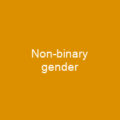Understanding Political Regimes
Imagine a world where the rules of governance are as varied as the weather patterns across different regions. In politics, a regime is like the climate that shapes how power is distributed and who gets to make decisions. It’s not just about who holds office; it’s about the system itself – whether it’s democratic or autocratic, and what forms those systems can take.
The Spectrum of Regimes
There are three main types of political regimes: democracies, totalitarian regimes, and authoritarian regimes. Hybrid regimes, which blend elements from these categories, often occupy the middle ground. But let’s dive deeper into what each one means.
Authoritarian Regimes
Authoritarian regimes are like a tight-knit community where everyone knows their place. Centralized power is in the hands of a few, and political freedoms are severely restricted. The opposition is silenced or suppressed. It’s as if the government holds all the cards, leaving little room for dissent.
Totalitarian Regimes
Think of totalitarian regimes as the ultimate form of control. They’re like a well-oiled machine where every aspect of society is under strict surveillance and regulation. Totalitarianism means no one escapes its reach, from personal lives to professional endeavors.
Democratic Regimes
On the other hand, democratic regimes are akin to a bustling marketplace where everyone has a voice. The rule of law ensures that all citizens are treated equally under the eyes of justice. Free and fair elections allow for peaceful transitions of power, and civil liberties protect individual rights.
Urban Regimes: Shaping Cities
Now, let’s zoom in on urban regimes – the local systems that shape our cities. These regimes are like the architects of urban landscapes, each with its unique approach to governance:
Entrepreneurial Urban Regime
An entrepreneurial urban regime is all about growth and development. It’s like a city on the rise, where projects that appeal to the community are supported. This type of regime focuses on advancing the city’s hierarchy by fostering economic opportunities.
Caretaker Urban Regime
A caretaker urban regime is more about maintaining the status quo. It’s like a well-kept garden where taxes remain low, and quality of life is preserved. This type of regime aims to keep things running smoothly without drastic changes.
Player Urban Regime
In a player urban regime, active government involvement in private sector decision-making is key. It’s like the referee stepping into the game to mediate between community groups and businesses, ensuring fair play for all parties involved.
Progressive Urban Regime
A progressive urban regime focuses on redistributing benefits to promote economic equity. This type of regime is like a social safety net, realigning resources to areas that need them most, fostering inclusivity and fairness.
Stewardship Urban Regime
Stewardship urban regimes have an adversarial stance toward large corporations. They’re like the guardians of community interests, combining fiscal accountability with long-term resilience. These regimes prioritize safeguarding local needs over business agendas.
Demand-Side Urban Regime
A demand-side urban regime focuses on supporting small businesses and revitalizing neighborhoods. It’s like a local bazaar where the community comes together to support each other, fostering economic vitality from within.
Measuring Regimes: Continuous vs. Binary Approaches
To understand regimes better, scholars use two primary methods for measurement: continuous measures of democracy and binary measures of democracy. Continuous measures classify regimes along a scale of democratic and autocratic characteristics, while binary measures categorize them as either democratic or non-democratic.
Continuous Measures
Continuous measures are like a spectrum where each regime can be placed based on its level of democratic or autocratic traits. This approach provides a nuanced understanding of the complexity and fluidity of political systems.
Binary Measures
Binary measures, on the other hand, offer a simpler classification: either democratic or non-democratic. While less detailed, this method is useful for quick assessments and broad categorizations.
Conclusion
In conclusion, understanding political regimes is crucial in navigating our complex world. Whether it’s the tight control of an authoritarian regime or the open dialogue of a democratic one, each system shapes society in unique ways. By studying these systems and their various types, we can better appreciate the diversity of governance and work towards more inclusive and equitable societies.

You want to know more about Regime?
This page is based on the article Regime published in Wikipedia (retrieved on December 12, 2024) and was automatically summarized using artificial intelligence.







